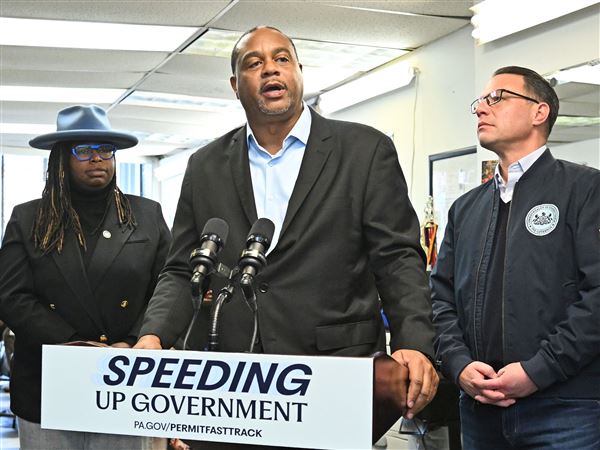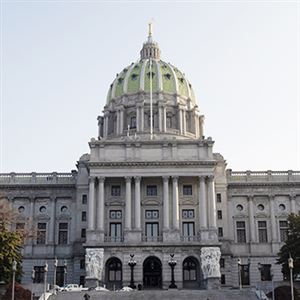WASHINGTON -- The Federal Reserve, trying to calm turmoil on Wall Street, announced today that it will pump as much money as needed into the U.S. financial system to help overcome the ill effects of a spreading credit crunch.
The Fed, in a short statement, said it will provide "reserves as necessary" to help the markets safely make their way. The central bank did not provide details but said it would do all it can to "facilitate the orderly functioning of financial markets."
The Fed pushed $35 billion in temporary reserves into the system this morning, on top of a similar move the day before.
Financial markets in the United States and around the globe have been shaken by fears about spreading credit problems that started with home mortgages for those with tarnished credit histories. Investors are worried that these problems will infect the larger financial system and possibly hurt the U.S. economy.
The Fed's action may have eased some investors' anxieties today, with the Dow Jones industrial average down 99 points in late-morning trading after suffering a much larger drop near the start of the session.
The current financial turmoil provides the biggest test yet to Federal Chairman Ben Bernanke, who took the helm last year.
The Fed's action comes one day after a financial panic about a credit crunch swept through Europe. That prompted the Europeans to pump $130 billion into their financial system. The Fed moved yesterday to add an extra $24 billion in temporary reserves to the U.S. banking system. But that wasn't enough to comfort Wall Street, which suffered its second-worst decline of the year that day.
The Fed today chose not to cut a key interest rate, called the federal funds rate, to address the problem. That interest rate still stands at 5.25 percent. The funds rate is interest banks charge each other on overnight loans and is the Fed's main lever to influence economic activity.
Instead, the Fed is seeking to provide reassurance to investors that the central bank will plow extra money into the U.S. financial system to make sure the credit crunch doesn't worsen.
The Federal Reserve Bank of New York, which carries out the central bank's market operation, moved to add $19 billion in temporary reserves this morning. A couple of hours later, it added another $16 billion in reserves.
"In current circumstances, depository institutions may experience unusual funding needs because of dislocations in money and credit markets," the Federal Reserve in Washington said in its statement.
It told banks that the Fed's discount window -- where banks can turn in an emergency for short-term loans -- is available as a source of funding.
After the Sept. 11, 2001, terror attacks, the Fed used the discount window to extend billions of dollars worth of emergency loans to banks to keep the financial system functioning.
The current meltdown in the housing and mortgage markets has caused new home foreclosures to climb to record highs and has forced some lenders out of business. Problems first sprouted in the market for higher-risk or "subprime" mortgages, which are held by people with poor credit or low incomes. But some problems have spilled over to more creditworthy borrowers. That has led to tighter lending standards, making credit harder to get for people and businesses.
The free flow of credit is important to the smooth functioning of the national economy. Increasingly restrictive lending conditions can put a damper on people's ability to buy big-ticket items such as homes, cars and appliances. And it can crimp businesses' capital investment and hiring. That reduced appetite by businesses and consumers would slow overall economic activity.
Against this backdrop, Wall Street has careened wildly in recent weeks.
Bernanke and his central bank colleagues, in a meeting on Tuesday, acknowledged that these problems are posing increasing risks to the economy. But they refrained from cutting interest rates and stuck to their forecast that the economy will weather the financial storm and grow gradually in the coming months.
"Financial markets have been volatile in recent weeks, credit conditions have become tighter for some households and businesses and the housing correction is ongoing," the Fed said on Tuesday, its first acknowledgment of the conditions shaking Wall Street and Main Street. "Downside risks to growth have increased somewhat."
One day later, President Bush struck a reassuring tone about the turbulence on Wall Street, saying he believed that the markets would achieve a "soft landing." The market ended Wednesday up by 154 points, but then went into its nosedive yesterday.
First Published: August 10, 2007, 4:00 p.m.














